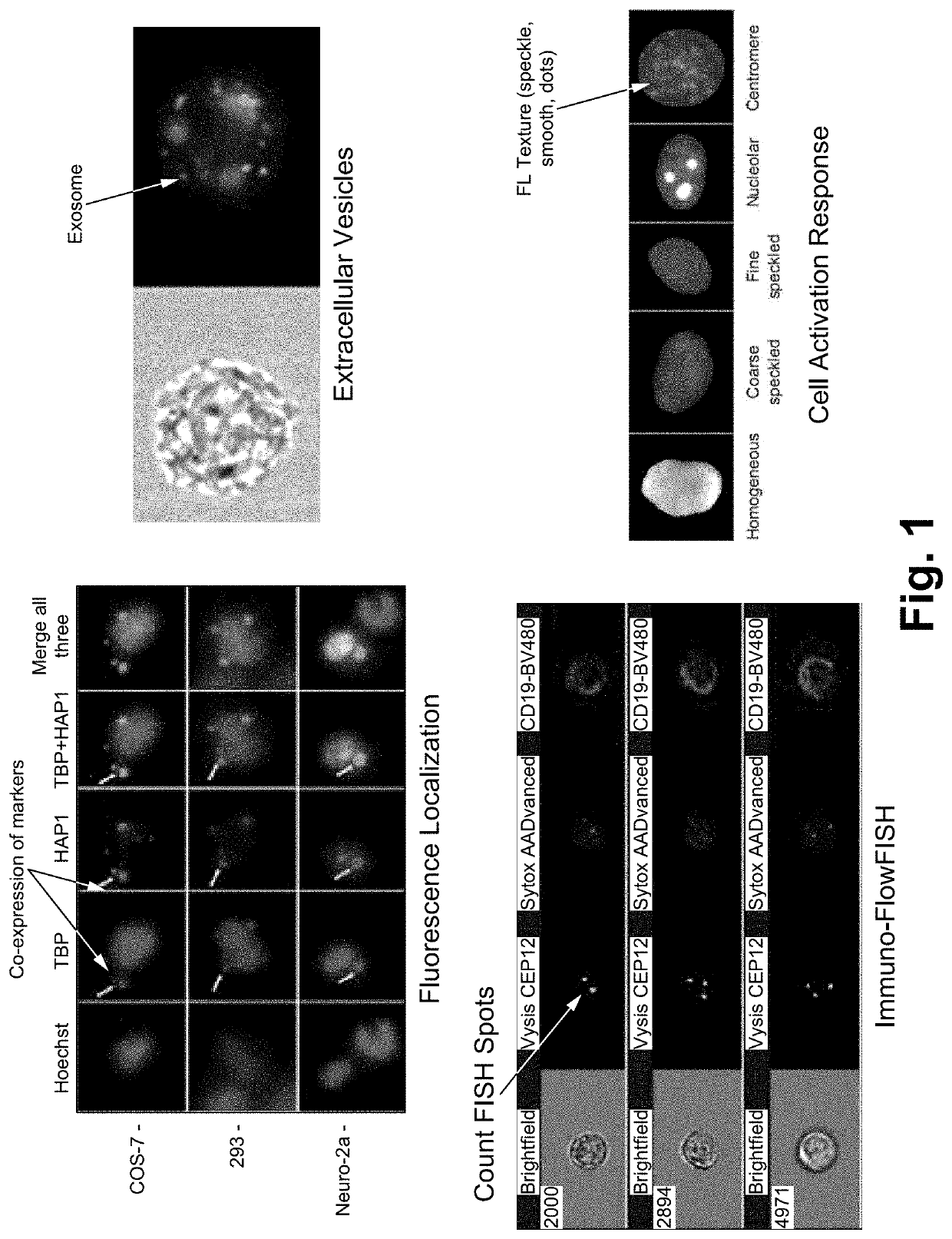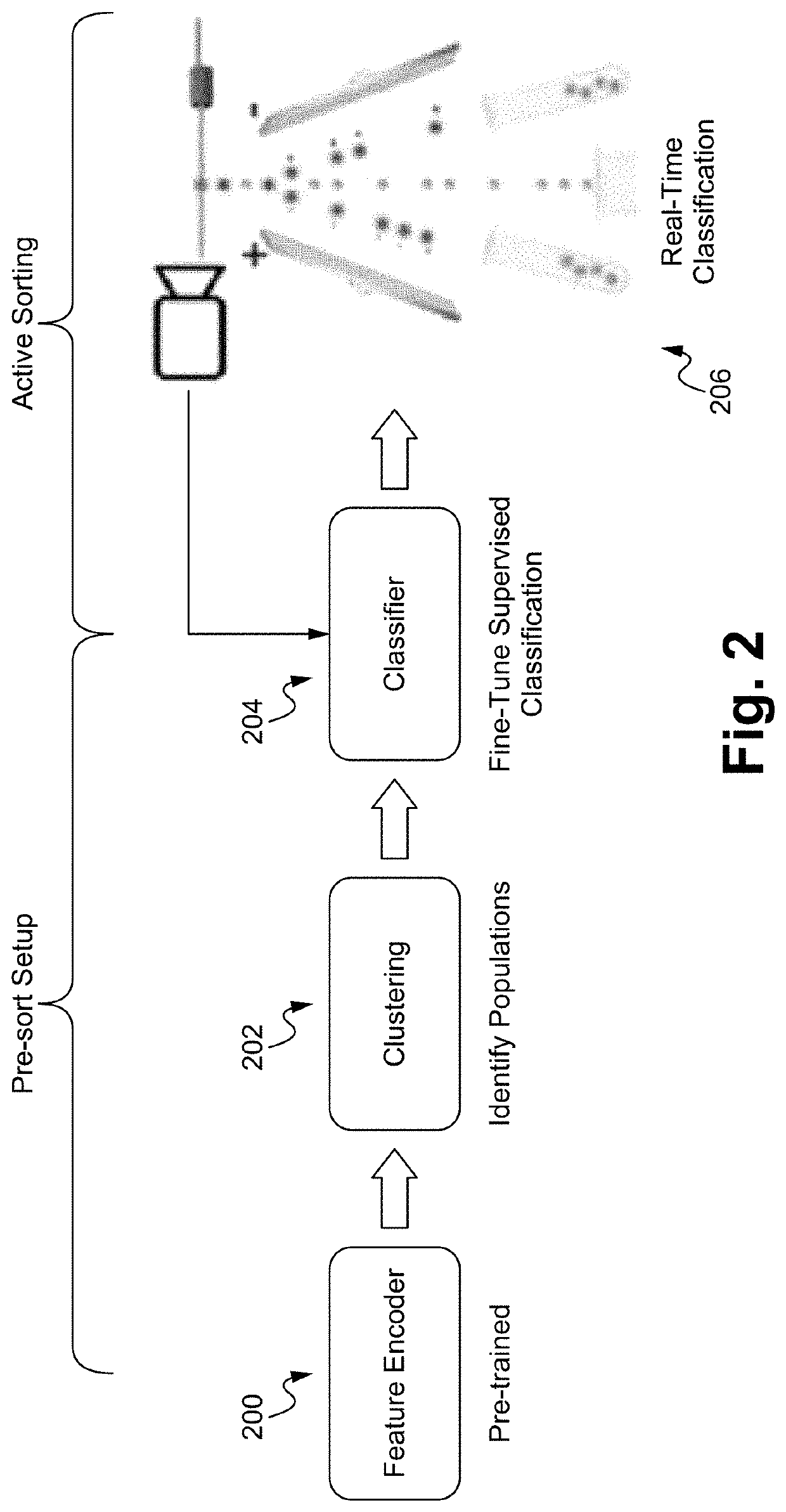Classification workflow for flexible image based particle sorting
a particle sorting and workflow technology, applied in the field of cell sorting, can solve the problems of biased gating, limited morphological information of cells, and inability to use fluorescent markers, etc., and achieve the effects of reducing user steps, improving ease of use, and increasing automation
- Summary
- Abstract
- Description
- Claims
- Application Information
AI Technical Summary
Benefits of technology
Problems solved by technology
Method used
Image
Examples
Embodiment Construction
[0017]The image-based classification workflow identifies subpopulations present in a sample, allows a user to choose which subpopulation(s) to be purified, and then fine-tunes a supervised classification system that will make real-time sort decisions.
[0018]The classification workflow is a solution that allows for a flexible image-based cell classification system that accommodates a wide variety of biological applications. The use of unsupervised clustering to label cell images to fine-tune an efficient supervised classification network to make real-time sort decisions is a novel idea which enables improved ease of use for an image-based cell sorter.
[0019]The classification workflow addresses unmet needs of flow cytometry-based cell sorting customers: it allows for cell sorting applications that require imaging which cannot be performed on traditional fluorescence activated cell sorting and it allows the sort classification to be optimized for a wide variety of applications.
[0020]The...
PUM
 Login to View More
Login to View More Abstract
Description
Claims
Application Information
 Login to View More
Login to View More - R&D
- Intellectual Property
- Life Sciences
- Materials
- Tech Scout
- Unparalleled Data Quality
- Higher Quality Content
- 60% Fewer Hallucinations
Browse by: Latest US Patents, China's latest patents, Technical Efficacy Thesaurus, Application Domain, Technology Topic, Popular Technical Reports.
© 2025 PatSnap. All rights reserved.Legal|Privacy policy|Modern Slavery Act Transparency Statement|Sitemap|About US| Contact US: help@patsnap.com



